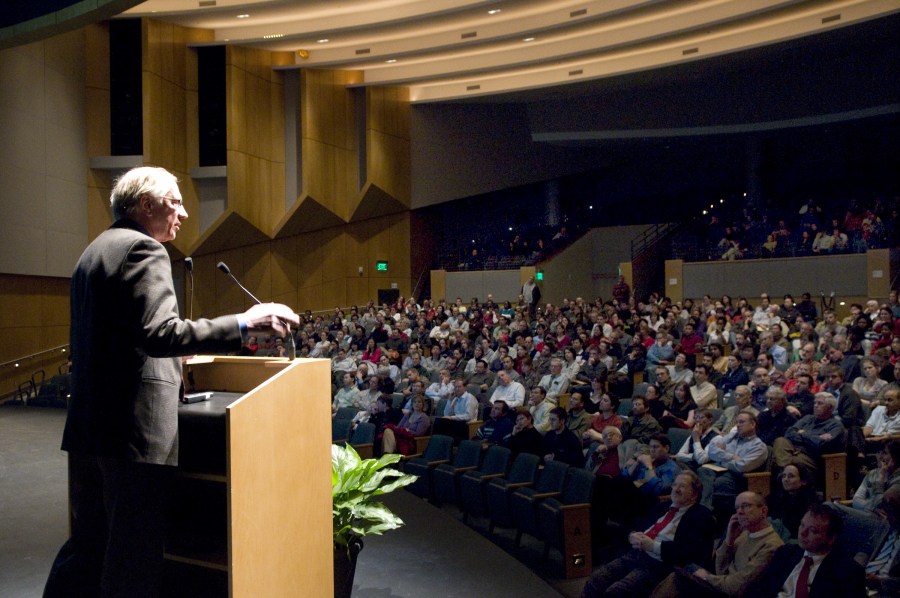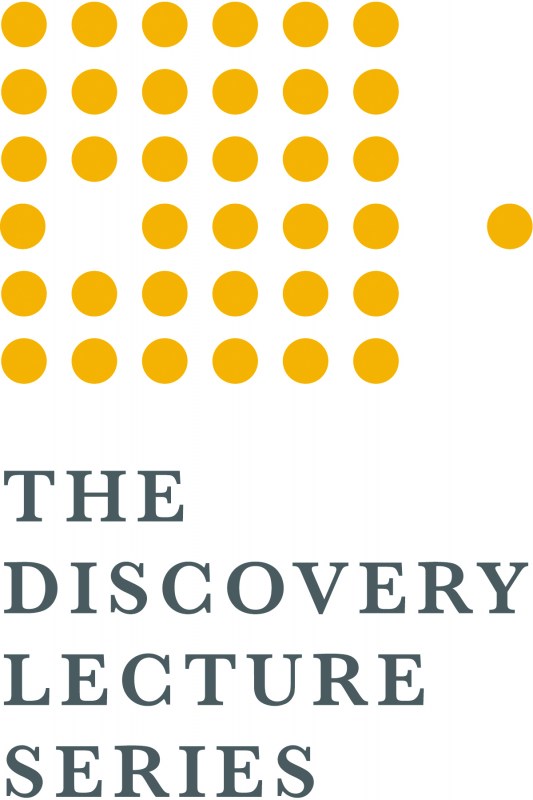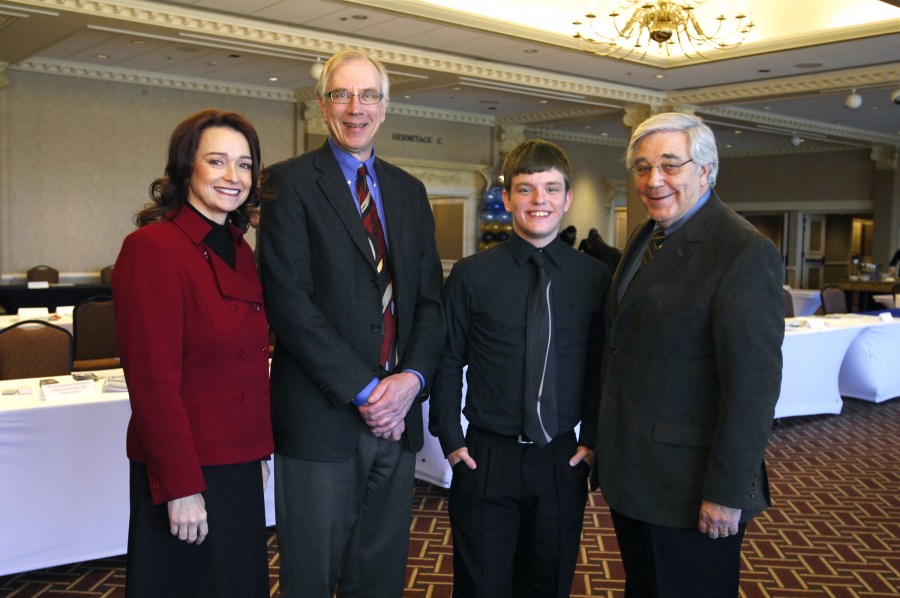
Nobel Laureate Thomas Cech, Ph.D., delivers his Discovery Lecture in Langford Auditorium. (photo by Mary Donaldson)
Cech describes a career of discoveries
Just a couple of years after Thomas Cech, Ph.D., started running his own laboratory at the University of Colorado-Boulder, he and his colleagues got an unexpected result.
Their studies appeared to show that ribonucleic acid (RNA) could cut and rejoin chemical bonds without any proteins around. This went against

The studies led to a re-writing of biology textbooks and to the 1989 Nobel Prize in Chemistry for Cech, who delivered last week's Abraham Flexner Discovery Lecture.
Cech, Distinguished Professor at UC-Boulder and director of the Colorado Initiative in Molecular Biotechnology, joked that since he'd never been to Vanderbilt before, he would “talk about everything I've done in my career, from assistant professor to the present.”
In his wide-ranging lecture, Cech described his team's early work that established RNA as a molecule that could serve as both information carrier (like DNA) and biocatalyst (like proteins). He then discussed his team's more recent findings related to the structure and activity of telomerase — a complex of RNA and proteins that replicates the DNA at the ends of chromosomes and is involved in genome stability, cancer and cellular aging.
The title of his talk, “Crawling out of the RNA World,” had a double meaning, he said.
“Many of us think that there was a time some billions of years ago in which RNA, with its ability to both be a biocatalyst and an informational molecule, to give both genotype and phenotype, may have — as a self-replicating RNA — constituted the first self-producing life on this earth.
“And in addition to that, our own laboratory has sort of crawled out of this so-called RNA world and is now exploring the world of RNA working together with proteins to perform critical biological functions.”
Cech, who is a Howard Hughes Medical Institute Investigator and served as the institute's president from 2000 to 2009, received the 1988 Albert Lasker Award for Basic Biomedical Research and the 1995 National Medal of Science.
His lecture was sponsored by the Center for Matrix Biology and the Department of Pathology.
For a complete schedule of the Discovery Lecture series and archived video of previous lectures, go to www.mc.vanderbilt.edu/discoveryseries.
STEM education

At the conference on science, technology, engineering and math (STEM) were, from left, Julie Hudson, M.D., Thomas Cech, Ph.D., Aspirnaut member Cody Strothers, and Billy Hudson, Ph.D. (photo by Anne Rayner)
Speaking earlier at a national conference in Nashville on science, technology, engineering and math (STEM) education, Cech said there is a need for more hands-on learning.
“It is a considerable amount of work to change your educational style so dramatically, but we should be finding ways of engaging our students in more active learning…[and] transform away from lecture mode,” he said.
Cech shared strategies that he and other colleagues use in the classroom to engage students. He talked about the HHMI Professors program, where college professors active in research receive a $1 million grant to employ innovative methods of learning into their undergraduate classrooms.
Continuing along the theme of active learning, Billy Hudson, Ph.D., professor of Medicine and director of the Vanderbilt Center for Matrix Biology, Julie Hudson, M.D., assistant vice chancellor for Health Affairs at Vanderbilt, discussed how they have tied university research into high school curricula through the Aspirnaut Initiative.
The three-year-old program, which is being piloted in Billy Hudson's home state of Arkansas, aims to improve science education in rural communities through variety of technological approaches.
Cody Stothers, a high school senior who has participated in the Aspirnaut Initiative and who has just been admitted to Vanderbilt, said the program “has benefited me in every facet of my life.
“As I prepare to go to college, I will continue to draw from my summer experience at the Vanderbilt internship program as a source of diligence, patience and perseverance,” he said.
Representatives from 98 schools across 29 states attended the National Consortium for Specialized Secondary Schools of Mathematics, Science and Technology (NCSSSMST) Professional Conference to discuss the future of STEM education.
The consortium hopes to serve as a catalyst for transforming education by empowering students, teachers and communities to meet the demands of a technologically advanced world.
— Sarah Plumridge contributed to this story













